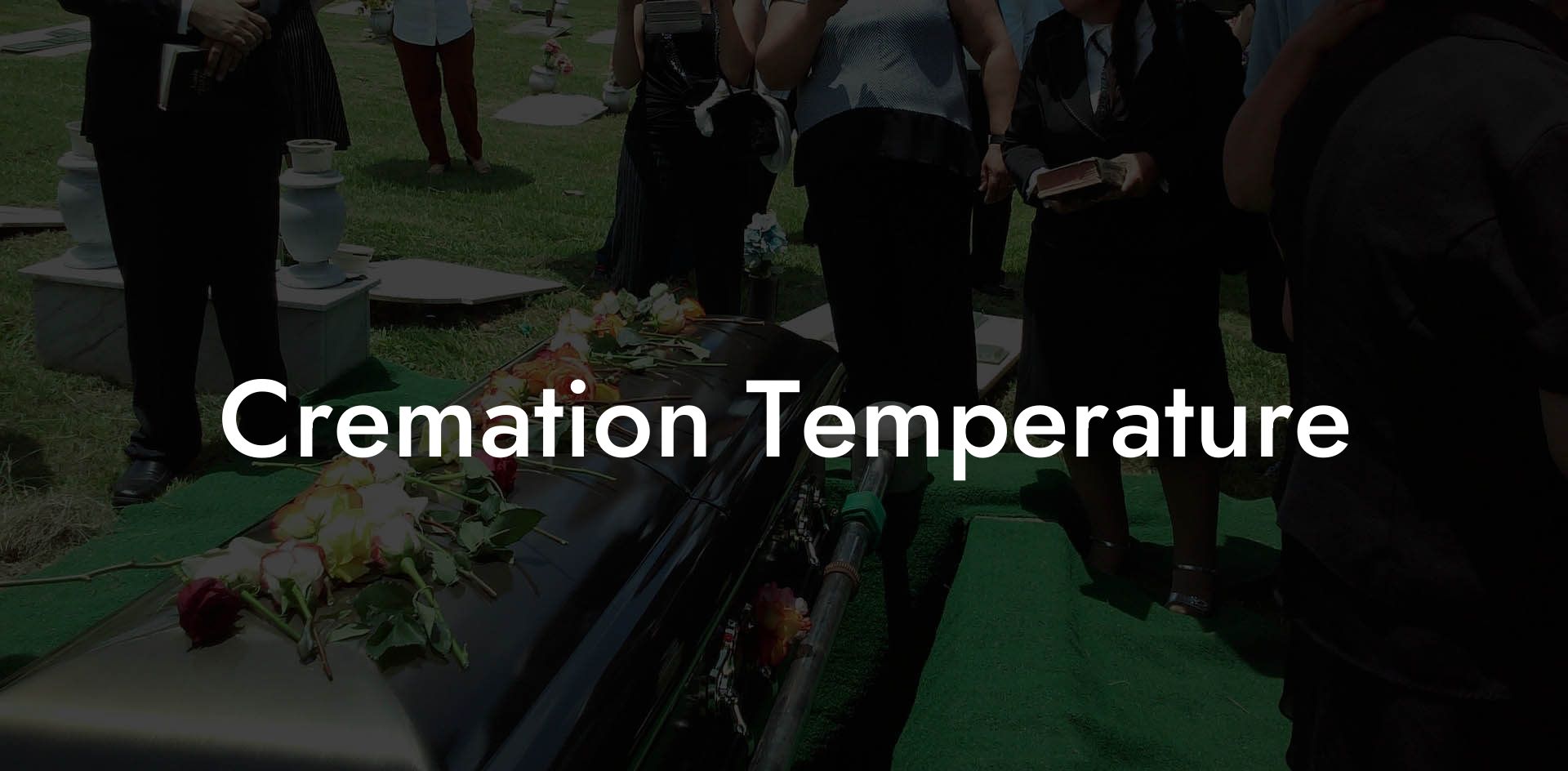Imagine a world where the departed can be honored in a way that's not only environmentally friendly but also deeply personal. Welcome to the world of cremation, where the temperature at which we bid our final farewells is not just a technicality, but a crucial aspect of the grieving process.
Quick Links to Useful Sections
- What Is Cremation Temperature?
- The Science Behind Cremation Temperature
- The Importance of Cremation Temperature Control
- Cremation Temperature and Environmental Impact
- Cremation Temperature and Cultural Significance
- Frequently Asked Questions About Cremation Temperature
- Resources and Community Support: Your Next Steps
What Is Cremation Temperature?
Cremation temperature refers to the extremely high heat required to reduce a human body to its basic elements. This process, also known as cremation or incineration, involves exposing the body to temperatures ranging from 1400°C to 1800°C (2550°F to 3270°F) in a specially designed furnace called a cremator.
The resulting ashes, or cremated remains, are then processed into a fine powder, known as cremains, which can be returned to the family for memorialization or scattering.
The Science Behind Cremation Temperature
The cremation process is a complex combination of thermal, chemical, and physical reactions. At the heart of it lies the principle of thermal decomposition, where the body's organic matter is broken down into its constituent elements.
- Protein denaturation: At temperatures above 60°C (140°F), proteins begin to denature, or unwind, leading to the breakdown of cellular structures.
- Lipid oxidation: Fats and oils in the body undergo oxidation, releasing volatile compounds that contribute to the characteristic smell of cremation.
- Calcination: Bones and other calcified tissues are reduced to their mineral components, primarily calcium and phosphorus.
- Vaporization: Water and other volatile compounds evaporate, leaving behind a residue of dry, brittle bones.
By the end of the cremation process, the body has been transformed into a sterile, odorless, and compact form, suitable for memorialization or disposal.
The Importance of Cremation Temperature Control
Maintaining a precise temperature range is crucial to ensure a dignified and respectful cremation process. If the temperature is too low, the body may not be fully cremated, resulting in incomplete combustion and potential environmental hazards.
On the other hand, excessive temperatures can lead to the destruction of metal implants, such as pacemakers or artificial joints, which can cause damage to the cremator and release toxic fumes.
Modern cremators are equipped with advanced temperature control systems, ensuring that the optimal temperature range is consistently maintained throughout the process.
Cremation Temperature and Environmental Impact
Cremation, when done responsibly, can be a more environmentally friendly option than traditional burial. However, the high temperatures involved in the process do come with some environmental concerns:
- Energy consumption: Cremation requires a significant amount of energy, which is often generated by fossil fuels and contributes to greenhouse gas emissions.
- Air pollution: The combustion process releases pollutants, such as particulate matter, carbon monoxide, and volatile organic compounds, into the atmosphere.
- Mercury emissions: The cremation of bodies with amalgam dental fillings can release mercury vapor, a potent neurotoxin, into the environment.
As the demand for cremation services continues to grow, the industry is shifting towards more sustainable practices, such as using alternative fuels, improving cremator efficiency, and implementing mercury abatement technologies.
Cremation Temperature and Cultural Significance
Cremation has been a part of human culture for thousands of years, with ancient civilizations like the Greeks, Romans, and Hindus embracing the practice as a way to honor their dead.
In many Eastern cultures, cremation is seen as a way to release the soul from the physical body, allowing it to transition to the afterlife. In Hinduism, for example, cremation is considered a sacred ritual, with the ashes scattered in sacred rivers like the Ganges.
In the Western world, cremation has become increasingly popular as a way to reduce funeral costs, conserve land, and promote environmental sustainability.
Frequently Asked Questions About Cremation Temperature
Here are some frequently asked questions about cremation temperature:
1. What is the ideal cremation temperature?
The ideal cremation temperature ranges from 1400°C to 1800°C (2550°F to 3270°F), depending on the type of cremator and the desired outcome.
2. How long does the cremation process take?
The cremation process typically takes around 1-2 hours, although this can vary depending on the size of the body and the type of cremator used.
3. Is cremation a safe process?
When performed by trained professionals using modern equipment, cremation is a safe and dignified process. However, there are risks associated with inadequate temperature control, poor ventilation, and improper handling of remains.
4. Can I witness the cremation process?
Some crematories offer witness cremation, where family members or friends can observe the process from a safe distance. However, this is not always possible or desirable, and the decision to witness cremation should be made with careful consideration.
Resources and Community Support: Your Next Steps
Whether you're planning a cremation service, coping with loss, or simply seeking more information, there are resources available to support you:
- Cremation associations: Organizations like the International Cemetery, Cremation and Funeral Association (ICCFA) and the Cremation Association of North America (CANA) provide guidance on cremation practices, regulations, and industry standards.
- Grief counseling: Reach out to local grief support groups, counseling services, or online resources like the National Funeral Directors Association's (NFDA) Grief Support Center.
- Cremation providers: Research and contact local crematories, funeral homes, or online cremation services to discuss your options and preferences.
Remember, you're not alone in this journey. Seek out support, ask questions, and take the time to understand the cremation process and its significance.

